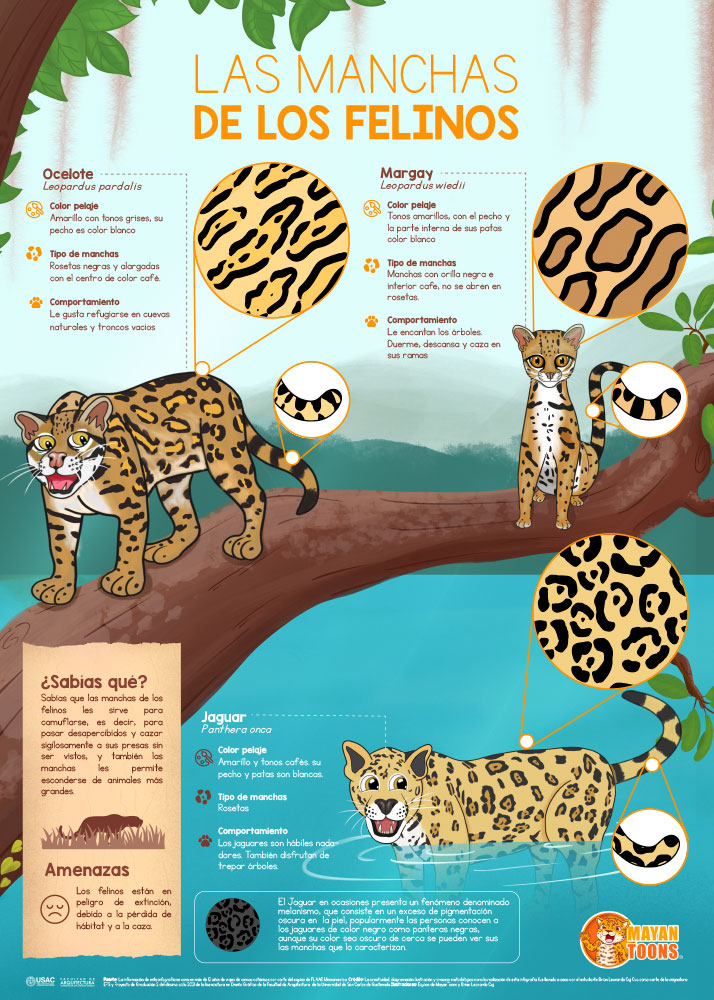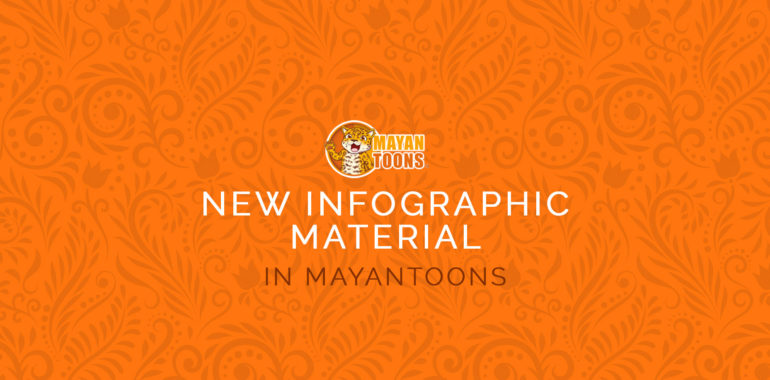Guatemala is a country with great natural and cultural wealth; however, many people are still unaware of much of the diversity that the territory possesses. One of the objectives of FLAAR Mesoamerica has always been the dissemination of scientific information for both academics and children who want to learn more about the various species of flora and fauna found in Guatemala. MayanToons is a subunit belonging to FLAAR Mesoamerica that is dedicated to the generation of informative content in a graphic format that is provided to children who generally do not have access to this type of information, infographics in one of the resources that are produced. Infographics have proven to be a useful tool to show a specific topic and expose various details about it in one glance.
Last year 2021, a Graphic Design student from the University of San Carlos de Guatemala (USAC) carried out his supervised professional practice at FLAAR. Brian Leonardo Cuj worked together with the MayanToons team (and the FLAAR Mesoamerica research team) to prepare twelve infographics on various topics about the native animals and plants of Guatemala. Brian combined the different styles of our artists, he also adapted existing illustrations. Each infographic features illustrations by Valeria Avilés, Josefina Sequen, Rosa Sequen, Isabel Trejo, and Andrea Bracamonte, our Illustrations division.
On behalf of FLAAR Mesoamerica and MayanToons, we appreciate the enthusiasm, professionalism, and knowledge that Brian left us from this experience. To access the infographics and be able to download them, you only must request them by sending an email to mayantoons@flaar.org.
Infographics currently available:
- Differences between Crocodiles
- Ten aquatic birds of Laguna Yaxha
- Differences between bees and wasps
- Guatemalan Turtles
- What do Bats eat?
- My friends from the Forest Floor
- My treetop friends
- The five felines of Guatemala
- The mammals of the Maya Biosphere Reserve
- Mushrooms of the Maya Biosphere Reserve
- Ten birds of interest in the Maya Biosphere Reserve
- Feline spots
Crocodiles are the largest reptiles that live in fresh and saltwater in our country. For Guatemala, 3 crocodilian species of the 26 described have been reported, 2 of them belonging to the Crocodylidae family (Crocodylus acutus and Crocodylus moreletii) and 1 species belonging to the Alligatoridae family (Caiman crocodilus). You can learn to differentiate each of them with the infographic made by Brian with the illustrations of Josefina Sequen.
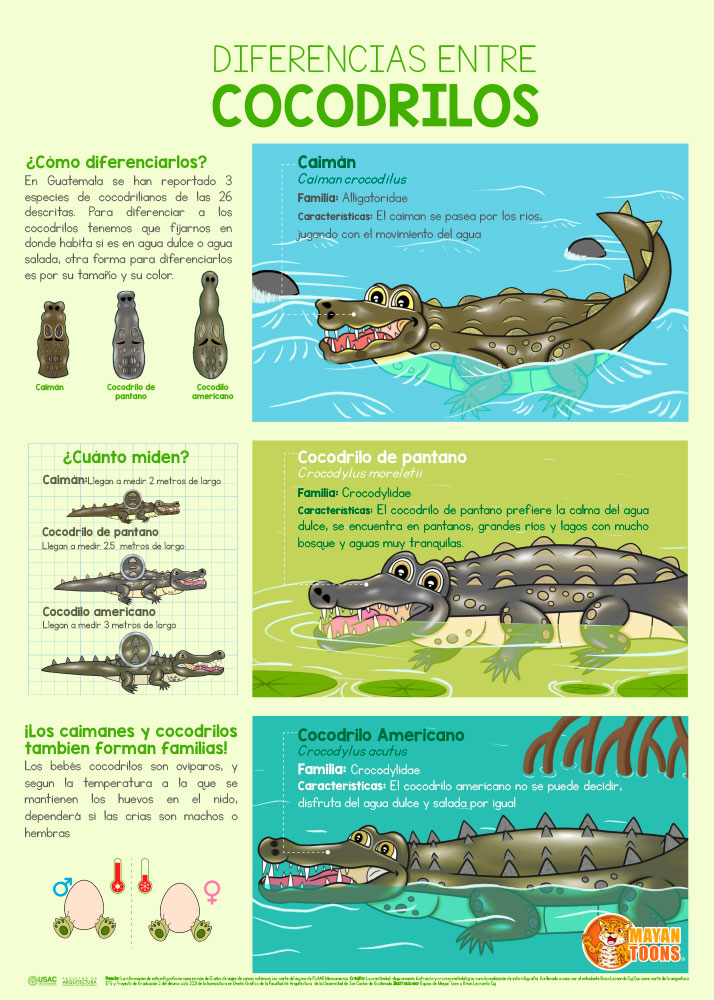
Upon reaching the main area of Yaxha, in the Yaxha-Nakum-Naranjo National Park, you can see a beautiful view of Laguna Yaxha and Laguna Sacnab, where you can see a wide variety of waterfowl flying over the incredible landscape. Laguna Yaxha is a paradise for waterfowl. In this natural reservoir, many birds find food such as fish, snails, and crabs. Use this infographic as a guide when you visit the park.
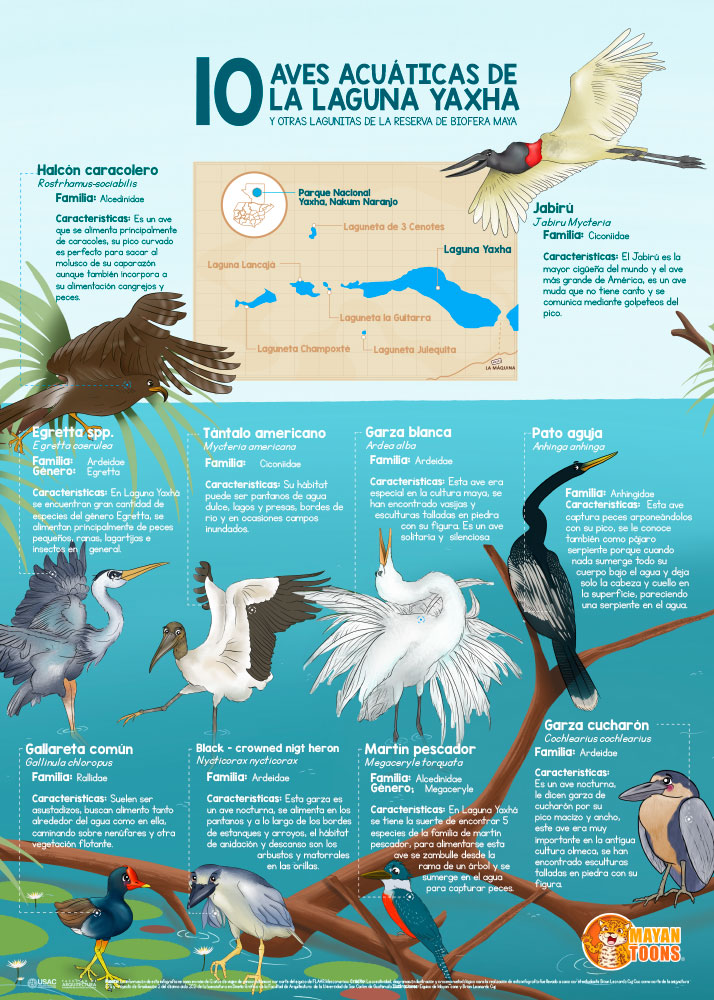
Bees and wasps belong to the order Hymenoptera, in Guatemala, there is a great diversity of species of bees and wasps. With this infographic, we can differentiate a bee from a wasp and learn about the characteristics that make them unique. They are very interesting insects that benefit humans and all ecosystems.
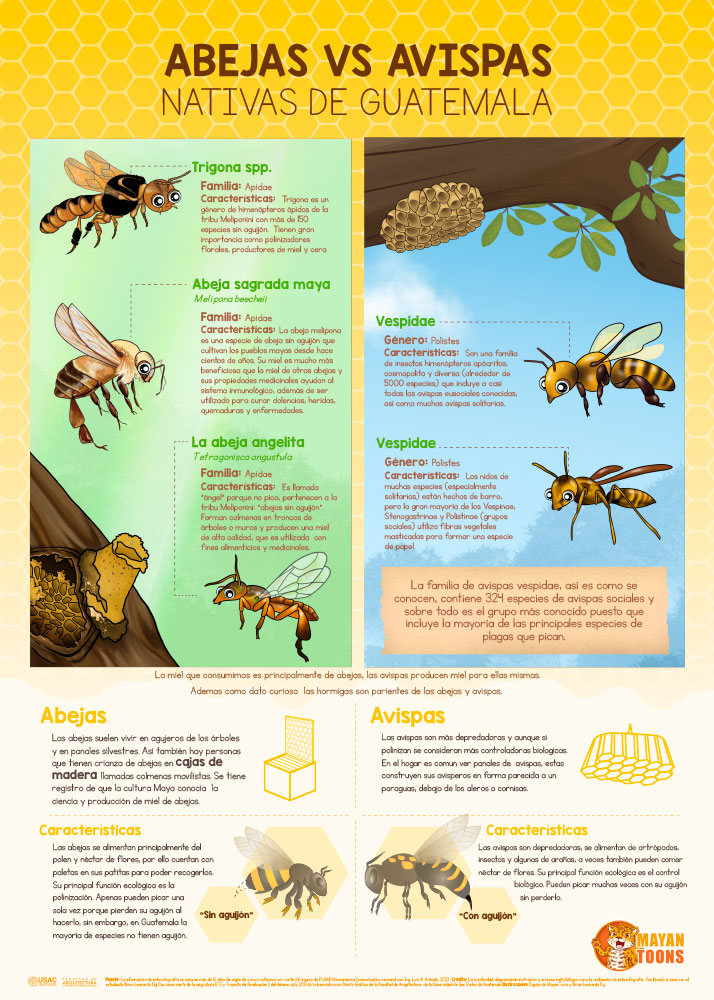
Turtles are among the longest living animals; some have lived for more than 100 years. In Guatemala there are land turtles, swamp turtles, and sea turtles, there are herbivorous turtles that only eat plants and there are others that are omnivores that also eat meat. In this infographic, you will find the species found in the country.
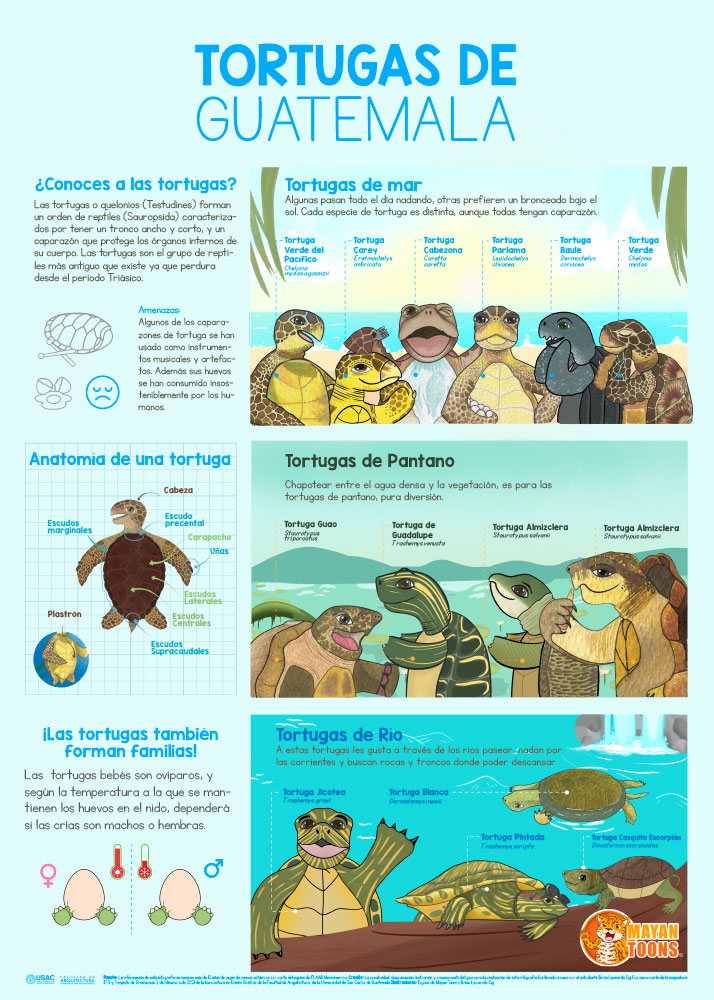
Answering what bats eat is not an easy task, since it is one of the most diverse groups of mammals. These animals have adapted to nocturnal environments around the world, occupying many types of habitats and niches. As a result, the feeding of the bat is very variable and depends on each group or even on each species. In our infographic, you can find species of bats present in Guatemala that have different types of food.
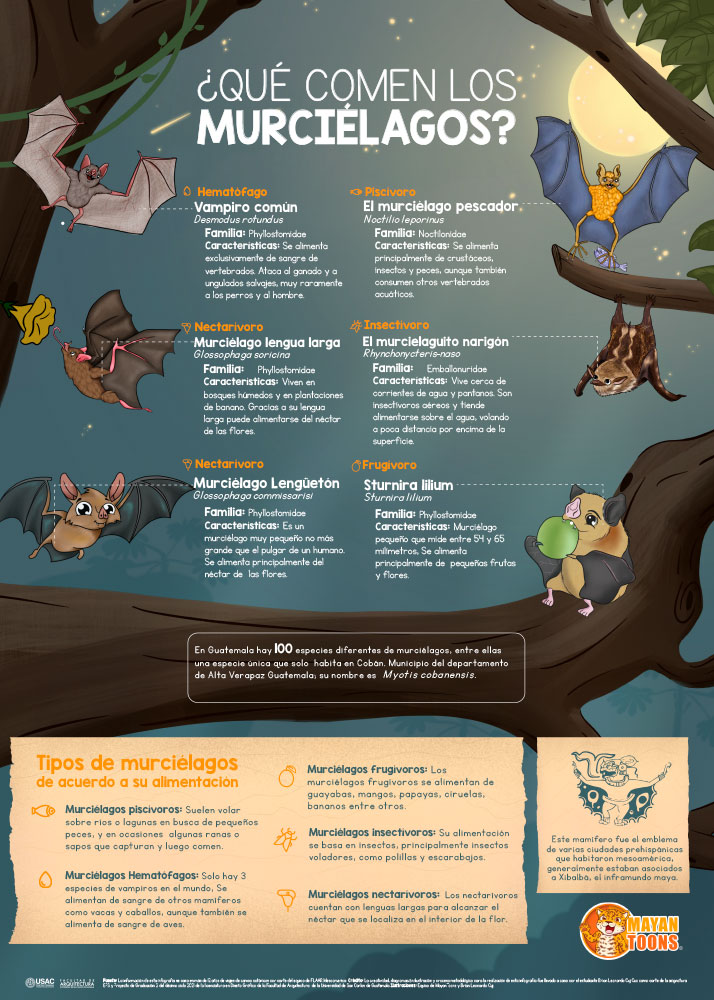
My Forest Floor Friends and My Treetop Friends are infographics created from our episodes created by our animation team at MayanToons. There is a great diversity of fauna that develops on the forest floor and in the treetops, it is important to know these species that can be affected by the loss of forest cover.
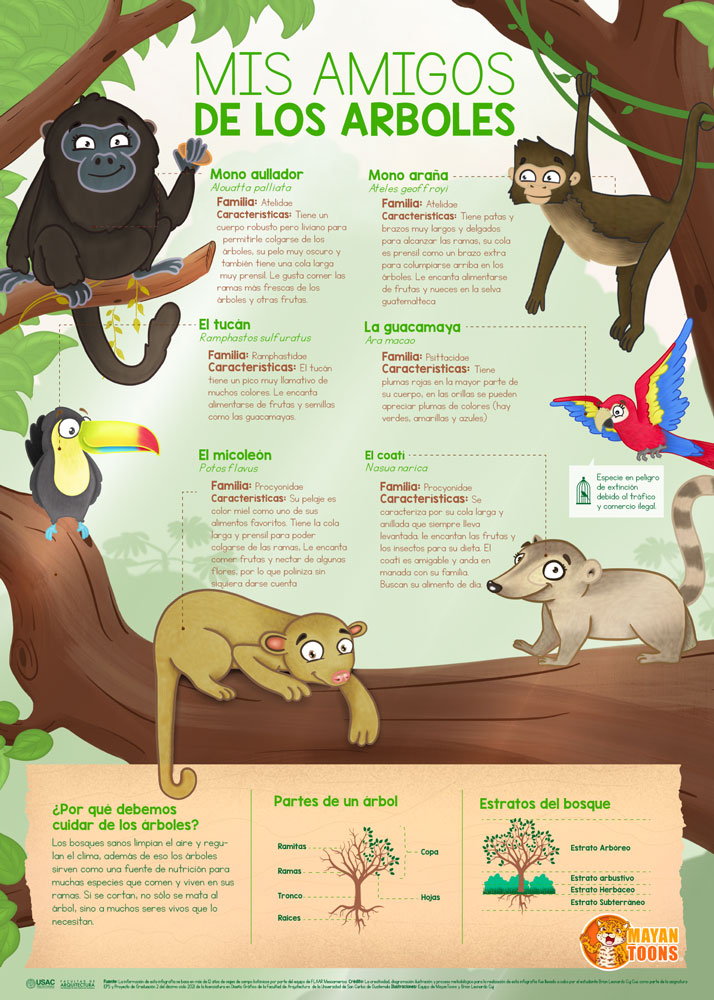
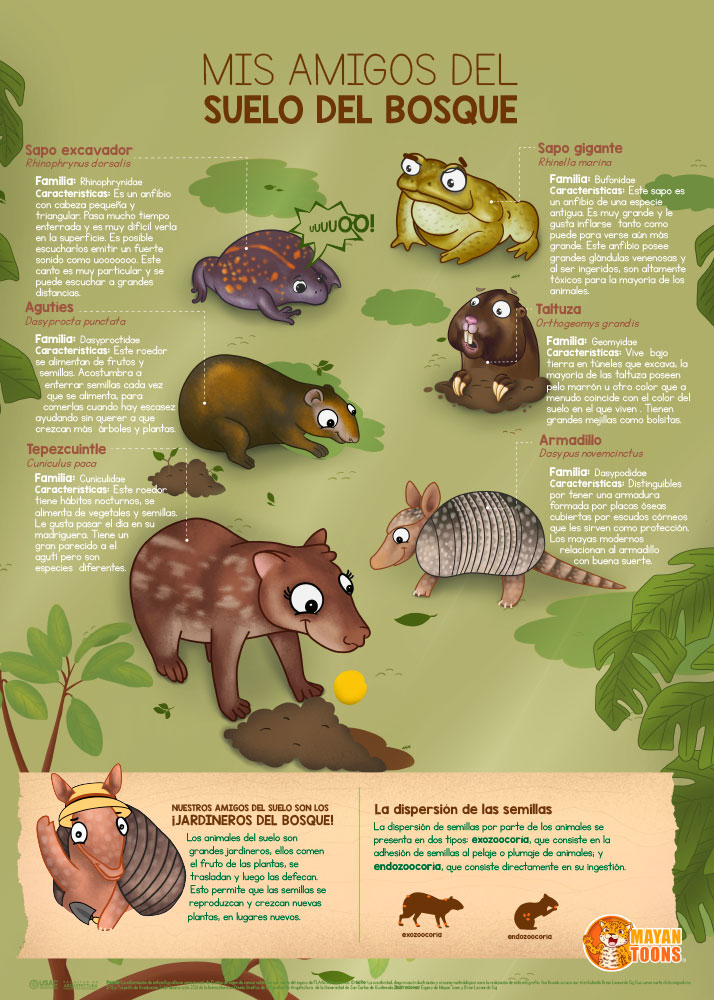
Felines are one of the largest mammals and predators in the Mayan jungle. The conservation of these animals is of great importance for ecosystems. When we know more about each one of them, we are taking the first step towards the conservation of these majestic animals.
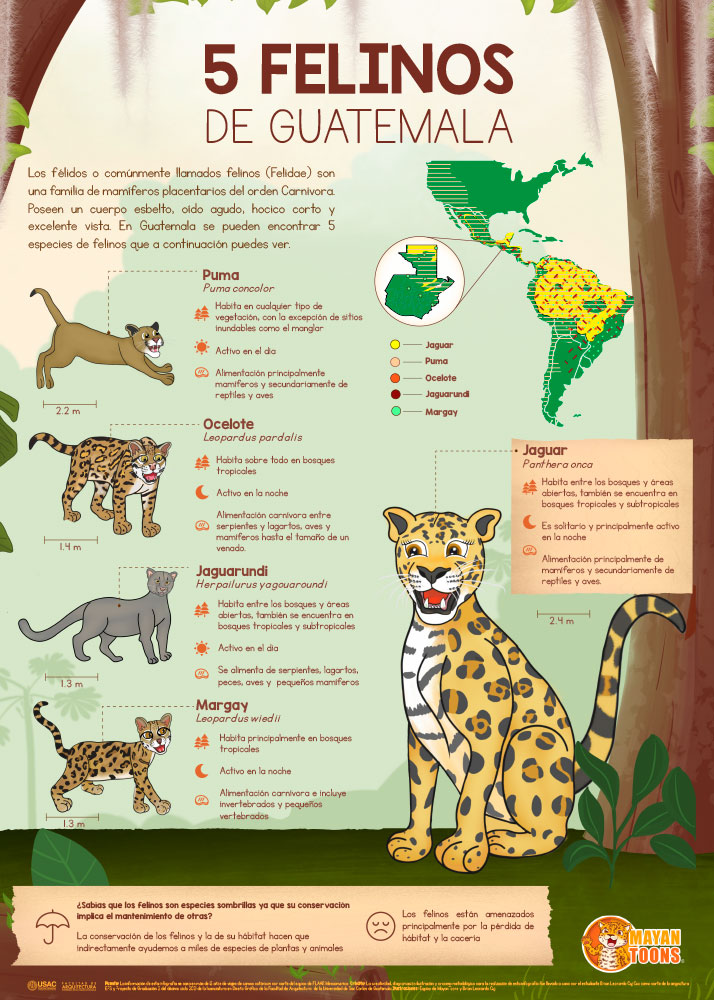
The Maya Biosphere Reserve is the most important protected area in the country, that is why we have prepared infographics that show the mammals, birds, and fungi that can be found here.
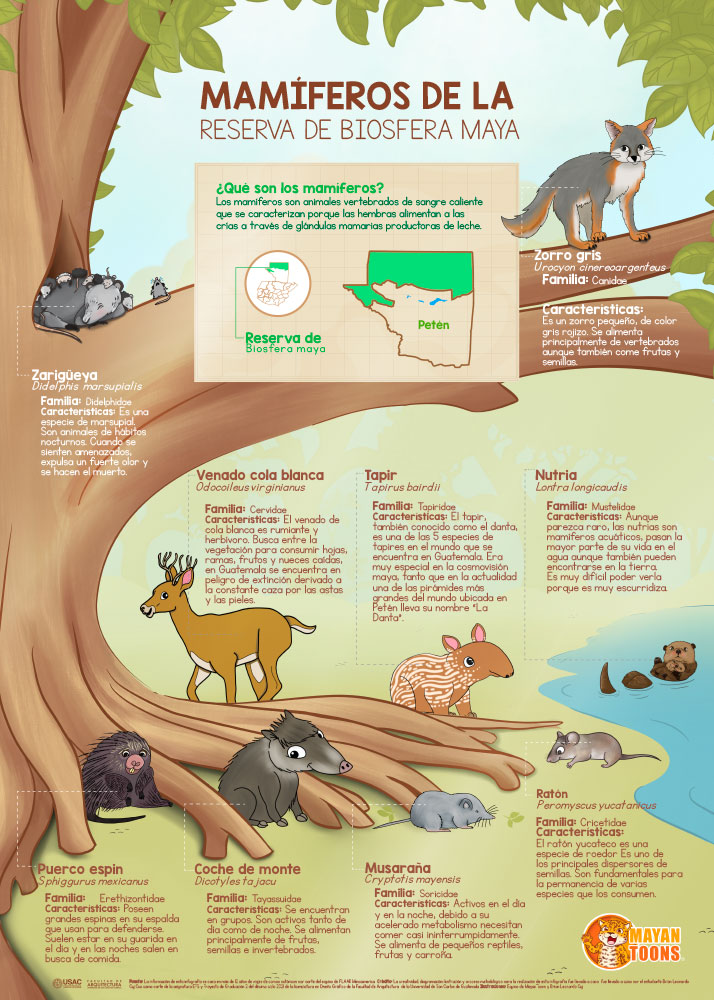
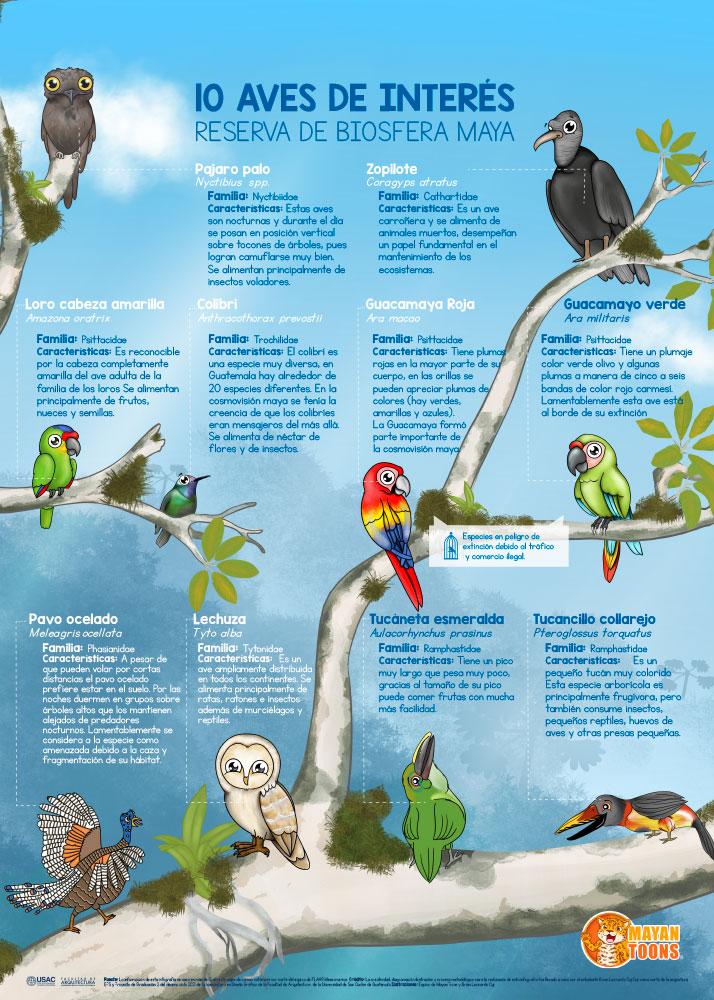
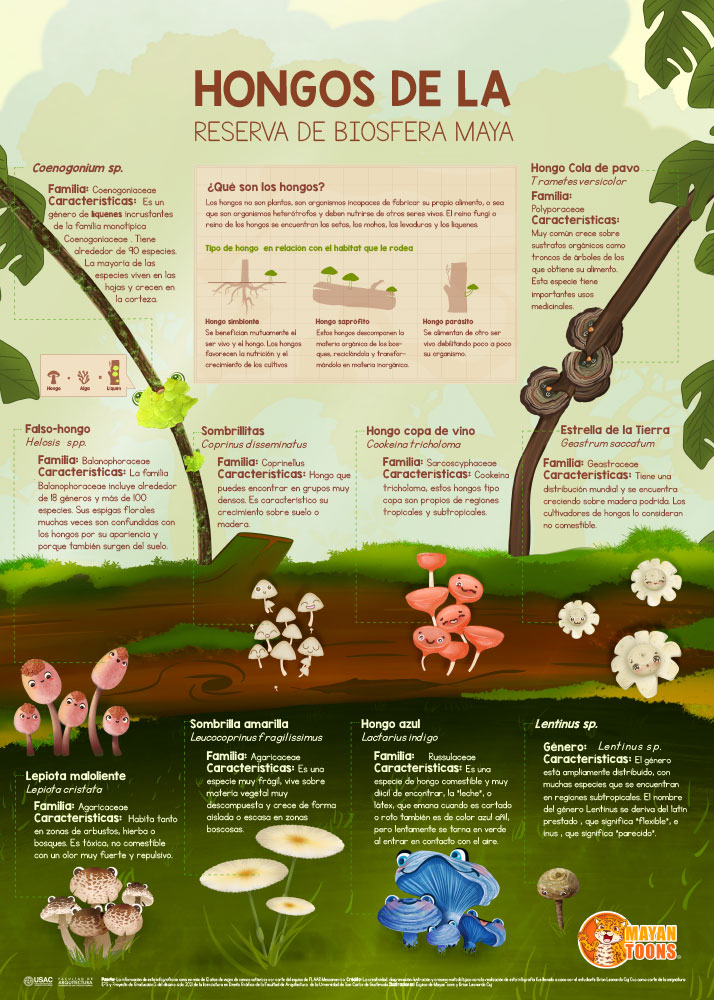
The spots on the fur of wild cats can tell us a lot about the ecosystem in which they develop, for example, cats with spots are typical of closed environments, such as forests; those with smooth fur usually inhabit open areas. Behavior also plays a role, the more time they spend in the trees and the more active they are at night, the more elaborate the drawing appears to be. In the infographic, you will be able to appreciate the differences in the spots of 3 different felines from Guatemala.
